- Home
- Q. Patrick
The Girl on the Gallows Page 2
The Girl on the Gallows Read online
Page 2
Meanwhile, Superintendent Wensley had started his interrogation of Bywaters. As with Mrs. Thompson, he has left a record of his first impressions of this second suspect:
“He was a stalwart, handsome young fellow of twenty, but both in appearance and manner he was much older. His attitude as he greeted me was full of self-assurance and there was a kind of studied arrogance in his tone. ‘What do you want with me?’ he demanded sharply. In his ordinary life I should imagine him to have been a conceited, dictatorial young man. I cannot say that the defiant air with which he confronted me impressed me very much in his favour. I was a man old enough to be his father, a chief-of-police seeking information about a cowardly murder, and no ordinary person would have resented my inquiries. I put it to him mildly that my one object in seeing him was to see if he could assist in getting at the truth.”
Superintendent Wensley’s first impression of Bywaters, therefore, was not exactly favorable. It had piqued his vanity, perhaps, that Bywaters had seemed unable to grasp how important and kindly and well intended the ideal detective was. However, this was the moment at which Wensley was told that the spots on the overcoat sleeve were indeed bloodstains. This, of course, put him in a much stronger position. He told Bywaters that he would be detained at the police station.
“Why?” asked Bywaters indignantly. “I know nothing about it.”
But, in due course, by “pointing out that if he wished to assist justice he should tell me all he could and that by doing so he would put me under a personal obligation,” the avuncular Wensley induced Bywaters to make a statement that reads as follows:
I have known Mr. Percy Thompson for about four years and his wife Edith for about 7 years.… I stayed with them from June 18th, 1921 to the 1st August, 1921. The first week that I was there, I was there as their guest and the remaining weeks I paid twenty-five shillings per week. The cause of my leaving was that Mr. Thompson quarrelled with Mrs. Thompson and threw her across the room. I thought it was a very unmanly thing to do and I interfered. We had a quarrel and he asked me to leave and I left. I had always been exceedingly good friends with Mrs. Thompson. I was also on visiting terms with her mother. After I left Mrs. Thompson, I went back to reside with my mother at my present address. On the 7th September, 1921, I got a position as writer on board the S.S. Morea. I sailed on the 9th September and returned to England the end of the following month. Shortly after I came back from the voyage I called on Mr. and Mrs. Thompson at their address. Mrs. Thompson received me quite friendly, Mr. Thompson a little coldly, but we parted friends. The same evening I called on Mrs. Graydon and I there again saw Mr. and Mrs. Thompson, who were visiting her. I have never called upon Mr. and Mrs. Thompson since that time. I have met them once or twice at Mrs. Graydon’s since, the last time being in June last. Since that date I have never seen Mr. Thompson. I have met Mrs. Thompson on several occasions since and always by appointment. They were verbal appointments. On Monday last I met her by appointment at 12:30 at Aldersgate Street. We went to lunch at the Queen Anne’s Restaurant, Cheapside. After lunch she returned to business and I have not seen her since. Mr. Thompson was not aware of all our meetings, but some of them he was. I have known for a very long time past that she had led a very unhappy life with him. This is also known to members of Mrs. Thompson’s family. I have written to her on two occasions. I signed the letters “Freddie” and I addressed her as “Dear Edie.” On the evening of Monday, 2nd October, I called on Mrs. Graydon and stayed there till about 10 o’clock. I never mentioned the fact that I had lunched with Mrs. Thompson that day, and as far as I know Mr. Thompson was not aware of it. I left my home yesterday morning [the morning of the murder] about a quarter to twelve. I was dressed in the same clothes that I am now wearing. I went up West and remained there until the evening. I was alone and never met anyone that I knew. I then went to Mrs. Graydon’s, arriving there about 7. I left about 11 o’clock, my impression is that it had gone 11:00. Before leaving I remember Mrs. Graydon’s daughter Avis saying that Percy had phoned her up, and I gathered from the observations she made that he was taking his wife to a theatre that night and that there was other members of the family going.
Bywaters then described in detail his return trip to his mother’s house and continued:
I let myself in with a latchkey and went straight to my bedroom. My mother called out to me. She said: ‘Is that you, Mick?’ I replied: ‘Yes,’ and then went to bed. I got up about 9 A.M. and about twelve I left home with my mother. I left my mother in Paternoster Row about half past two. I stayed in the City until about 5. I then went by train from Mark Lane to East Ham, and from there went on to Mrs. Graydon’s, arriving there about six. The first time that I learned that Mr. Thompson had been killed was when I bought a newspaper in Mark Lane before I got into the train to go to East Ham. I am never in the habit of carrying a knife. In fact, I have never had one. I never met a single person that I knew from the time that I left Mrs. Graydon’s house [on the night of the murder] until I arrived home. Mrs. Thompson has written to me two or three times. I might have received one letter from her at home. The others I have received on board ship. I have destroyed these letters. She used to address me as “Dear Freddie” and signed herself “Peidi.” I occupy the back bedroom on the top floor at my address, apd that is where I keep all my clothing. When I said that I was dressed in precisely the same clothing yesterday as I am today, I meant it to include my undergarments, with the exception of my collar and handkerchief which are at home.
This statement has been read over to me, is voluntary and is true.
[Signed] FREDERICK E. F. BYWATERS
Superintendent Wensley remained unimpressed with Bywaters, and his comment on the statement is:
“He rather cleverly told me just as much as he felt that we were certain to find out in any event.”
In this frame of mind, Wensley left Bywaters. Neither Bywaters nor Mrs. Thompson was under formal arrest, but they were both held at the police station. A bed was set up for Bywaters in the library. He had no idea that Mrs. Thompson was in the nearby matron’s room. Nor did Mrs. Thompson know that he was there.
Ignorant of each other’s presence, feeling whatever they felt, Mrs. Thompson and Frederick Bywaters spent under the same roof the second night of this new, vastly different life that had come for both of them.
Chapter Three
By the time Bywaters’ statement had been completed, it was around nine P.M. Soon afterward, Wensley was called to the telephone by the detectives who had been stationed outside Mrs. Bywaters’ house in Grove Park to await her home-coming. They told Wensley that Freddie’s mother had returned. Wensley instructed them to ask her permission to search Bywaters’ personal belongings. This was done. In Bywaters’ bedroom, Inspector Page found two notes to Bywaters from Mrs. Thompson in a little box. In a suitcase he discovered three letters and two telegrams, also sent by Mrs. Thompson.
These letters and notes, hastily glanced at by Inspector Page and then rushed to Wensley, were the gusher for which the Superintendent had been waiting. Bywaters had claimed that the few casual letters received by him from Mrs. Thompson, addressed to “Dear Freddie” and signed “Peidi,” had been destroyed by him on board the S.S. Morea.
These three letters, at least, had not been destroyed. And they were far from casual. They were indeed signed by “Peidi.” They were not, however, addressed to “Dear Freddie,” but to “Darling” or “Darlingest Boy,” and a quick reading of them was enough to tell Wensley that Bywaters had been lying and Mrs. Thompson enormously evasive about their relationship. As Wensley had suspected, these were unabashed, flagrant letters of love. And not only that. There was something else in them that even the ideal detective had never dreamed of finding there, something that he later described as “a sinister undercurrent.”
At ten o’clock, after he had read them, Superintendent Wensley was convinced that Edith Thompson and Freddie Bywaters had been deliberately and cold-bloodedly plotting the destruction
of Mrs. Thompson’s husband. In his own mind Wensley was satisfied that once again he had uncovered “the exact truth.” All that was necessary now was a vigorous attack.
The vigorous attack was launched on the afternoon of the next day with a re-examination of Mrs. Thompson. This interview was handled in the C.I.D. office by Wensley, Inspector Sellars, and Inspector Hall. They found Mrs. Thompson calmer than she had been the night before and willing to make a statement. It is to be remembered that she still had not been told that Bywaters was being held at the police station. She did not even know he was under serious suspicion. However, the ideal detective, who was contemptuous of clever police devices to trick suspects, had felt it fair enough to have planted on the table for this interview the three of Mrs. Thompson’s letters that had been found in Bywaters’ bedroom.
Mrs. Thompson must have seen those letters the moment she sat down to face her inquisitors. But, in spite of what must have been an overwhelming anxiety, her formal statement of the events of the night before differed very little from her earlier ones. And when Inspector Hall, the cat-and-mouse game over, actually picked up the letters and handed them to her for identification, all she had to say on the subject of Bywaters was:
I know Freddie Bywaters, I have known him for several years; we were at school together, at least I wasn’t but my two brothers were. He is residing with his widowed mother at 11 Westow Street, Norwood. He is a ship’s writer and periodically goes away to sea. He has been for a very long time on visiting terms with my family. In June 1921 Bywaters came to reside with my husband and myself at No. 41 Kensington Gardens. He came as a paying guest. I think he paid me 25 shillings or 27 shillings and 6 pence per week. He was with us up to the beginning of August 1921. I remember August Bank Holiday, 1921. My husband and I quarrelled about something, he struck me. I knocked a chair over. Freddie came in and interfered on my behalf. I left the room and I do not know what transpired between them. As far as my recollection goes, Freddie left on the following Friday, but before he left my husband and he were friends again. We have been in the habit of corresponding with one another. His letters to me and mine to him were couched in affectionate terms. I am not in possession of any letters he writes to me. I have destroyed all as is customary with me with all my correspondence. The letters shown to me by Inspector Hall and addressed to Mr. F. Bywaters are some of the letters that I wrote to Freddie, and were written to him without my husband’s consent. When he was at home in England, we were in the habit of going out occasionally together without my husband’s knowledge.
This statement has been read over to me. It is voluntary and true.
So there in the C.I.D. office we can imagine the two protagonists, Superintendent Wensley, who suspected much more than he was showing, and Mrs. Thompson, who knew far more than she had admitted. So far the mouse had not panicked and the eat had not pounced. There is a quietness, a British decorousness about the picture that is very different from any American equivalent. But this ominous quietness was not to last long.
What actually happened in the next few minutes was blurred over at the trial and never subsequently elucidated. The police tried halfheartedly to deny that any trap had been set, but the bulk of the evidence points to a “clever police device” much trickier than Wensley’s casual planting of the letters on the interrogation table. In any case, after the interview with Wensley, Inspector Sellars accompanied Mrs. Thompson back to the matron’s room. To reach this part of the building, it was necessary to pass through a courtyard, and the window of the library looked out onto this courtyard.
When Mrs. Thompson and Sellars were in the courtyard, Mrs. Thompson glanced at the library window, and there, inside the room, she caught a glimpse of Frederick Bywaters.
In an instant the composed, impersonal Mrs. Thompson of the interview disintegrated. At the sight of Frederick Bywaters a fit of hysteria shook her and she cried, “Oh, God, oh, God, what can I do? Why did he do it? I did not want him to do it. I must tell the truth.”
In that cry, all Edith Thompson’s pitiful attempts at evasion were blown away like straws. Inspector Sellars warned her that anything she might say could be used in evidence, but nothing now could check the flood. Back in the C.I.D. office, only a few minutes after she had signed her first statement, she branded it as a lie and at last lifted the curtain onto the scene of terror that she had tried so inadequately to conceal.
“When we got near Endsleigh Gardens, a man rushed out from the Gardens and knocked me away and pushed me away from my husband. I was dazed for a moment. When I recovered I saw my husband scuffling with a man. The man whom I know as Freddie Bywaters was running away. He was wearing a blue overcoat and a grey hat. I knew it was him although I did not see his face.”
Inspector Sellars lost no time. Having taken Mrs. Thompson’s statement, he hurried to Bywaters in the library. Had Bywaters also glimpsed Mrs. Thompson in that macabre courtyard scene? Evidence on this point was also blurred at the trial. But it is definite that, when he was confronted this time by Inspector Sellars, most of that young arrogance that had so exasperated Superintendent Wensley was gone. Bywaters had by now adopted the role to which he was unflinchingly to cling from that moment on. When Inspector Sellars said to him, “I am going to charge you and Mrs. Thompson with the willful murder of Percy Thompson,” all Bywaters thought of was Peidi’s safety.
“Why her?” he. cried. “Mrs. Thompson was not aware of my movements.”
Having made this point, he needed no urging to talk. His statement to Sellars, later submitted to the court, reads:
Mrs. Edith Thompson was not aware of my movements on Tuesday night, 3rd October. I left Manor Park at 11 P.M. and proceeded to Ilford. I waited for Mrs. Thompson and her husband. When near Endsleigh Gardens I pushed her to one side, also pushing him further up the street. I said to him, “You have got to separate from your wife.” He said, “No.” I said, “You will have to.” We struggled. I took my knife from my pocket and we fought and he got the worst of it. Mrs. Thompson must have been spellbound for I saw nothing of her during the fight. I ran away through Endsleigh Gardens, through Wanstead, Leytonstone, Stratford; got a taxi at Stratford to Aldgate, walked from there to Fenchurch Street, got another taxi to Thornton Heath. Then walked to Upper Norwood, arriving home about 3 A.M. The reason I fought with Thompson was because he never acted like a man to his wife. He always seemed several, degrees lower than a snake. I loved her and I could not go on seeing her leading that life. I did not intend to kill him. I only meant to injure him. I gave him an opportunity of standing up to me as a man but he wouldn’t. I have had the knife some time; it was a sheath knife. I threw it down a drain when I was running through Endsleigh Gardens.
A short time after this statement was signed, both Mrs. Thompson and Frederick Bywaters, together in the same room for the first time since their detention, were formally charged with murder.
Edith Thompson, her terrible moment of garrulity in the past, sat perfectly still and said nothing.
Frederick Bywaters cried, “It is wrong. It is wrong.”
He was not referring to the charge against himself; he was referring to the charge against Mrs. Thompson.
From then on the wheels of justice lumbered relentlessly forward. In 1922 the Coroner’s Court still conducted a full inquest on all violent deaths, even though, as in this case, a murder charge was pending. On the next day, both prisoners were taken to appear before the Stratford court. By this time Mrs. Thompson had fallen into a state of apathy, bordering almost on stupor, from which she never fully recovered. She had to be helped in and out of the court by a police matron.
Bywaters, on the other hand, buoyed up by his stubborn determination to take all the blame, was cooperative. When the police failed to find the knife in the Endsleigh Gardens area, he admitted uncertainty as to where he had disposed of it and gave them added information that finally led to the knife’s discovery down a drain.
On the evidence submitted at the inquest, a ver
dict of willful murder was brought against Bywaters. The three letters, although mentioned, were not read, and no charge was brought against Mrs. Thompson.
She was still, however, under arrest. And for the next three weeks the two of them were held in detention, awaiting their appearance before the Magistrate’s Court, which would pave the way for their trial at the Old Bailey.
From the start, the press and public had settled for this case as a major sensation. Even before the publication of the letters, headlines were full of “Husband Stabbed at Wife’s Side” … “Wife and Youth Accused.” But no one, not even the police, realized how truly sensational the case was going to prove until, on October twelfth, a locked “ditty box” belonging to Bywaters was found on board the S. S. Morea. This box was brought to the police station in Ilford. Bywaters yielded up the key. Inside, along with various newspaper clippings that had been sent by Mrs. Thompson, were found fifty-nine more letters from Peidi to her Darlingest Boy. Later, three letters—the only three in existence—from Bywaters to Edith Thompson were found in a little box at Mrs. Thompson’s place of business. Now there were enough letters to glut the appetite of the most insatiable of newspaper readers, and the “sinister undercurrent” that Wensley had detected in the first three samples seemed to have broadened into a raging torrent.
These letters are, of course, by far the most famous letters ever to figure in a murder case. They are the letters that outraged and shocked the British nation, letters that one juror subsequently branded as “nauseous,” letters that revealed the most haunting, moving, controversial, terrifying love affair in crime—letters that, by their publication, exposed to the world the extraordinary secret life of an extraordinary woman and immortalized Edith Thompson as a personality, in her small way, of a Giacondaesque mystery and fascination.

 Death Goes to School
Death Goes to School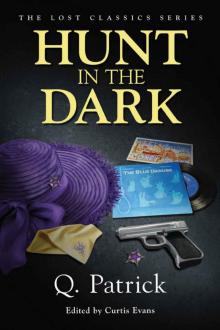 Hunt in the Dark
Hunt in the Dark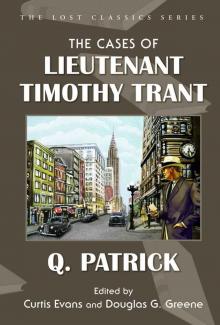 The Cases of Lieutenant Timothy Trant (Lost Classics)
The Cases of Lieutenant Timothy Trant (Lost Classics)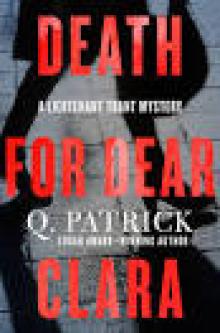 Death for Dear Clara
Death for Dear Clara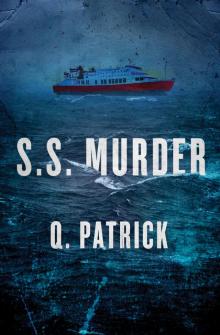 S.S. Murder
S.S. Murder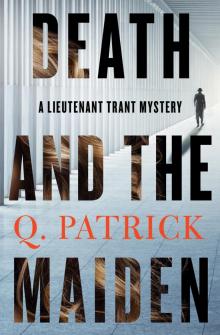 Death and the Maiden
Death and the Maiden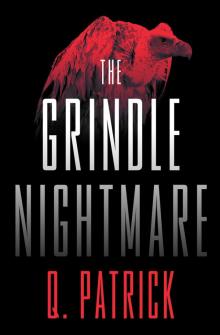 The Grindle Nightmare
The Grindle Nightmare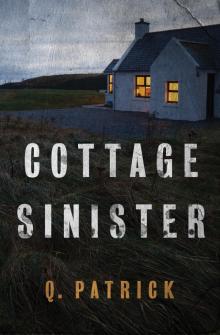 Cottage Sinister
Cottage Sinister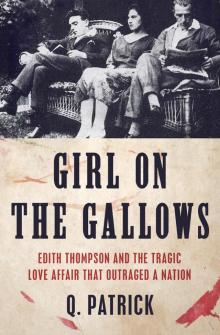 The Girl on the Gallows
The Girl on the Gallows